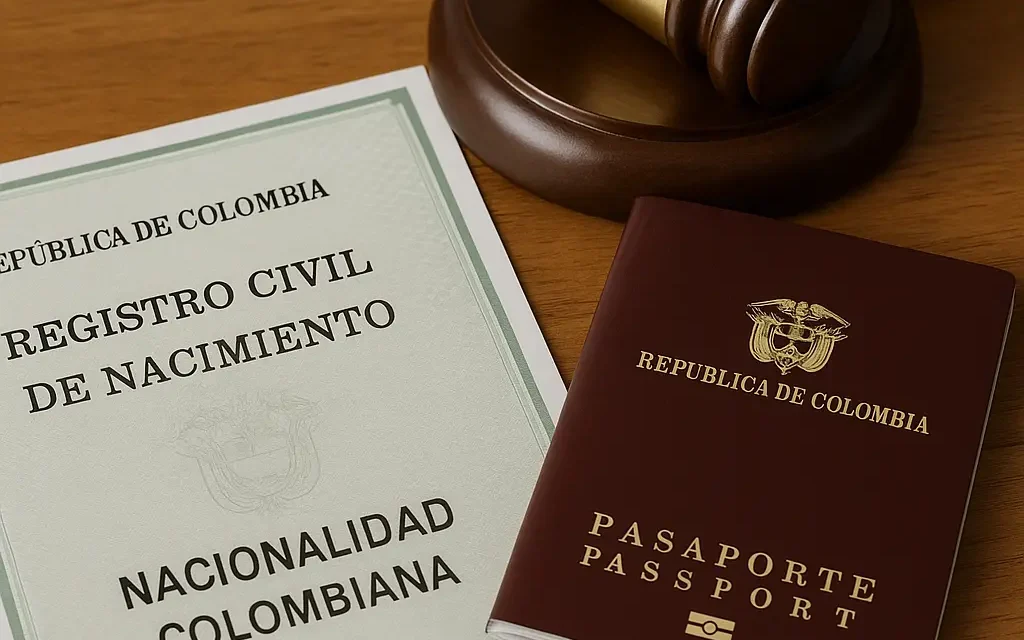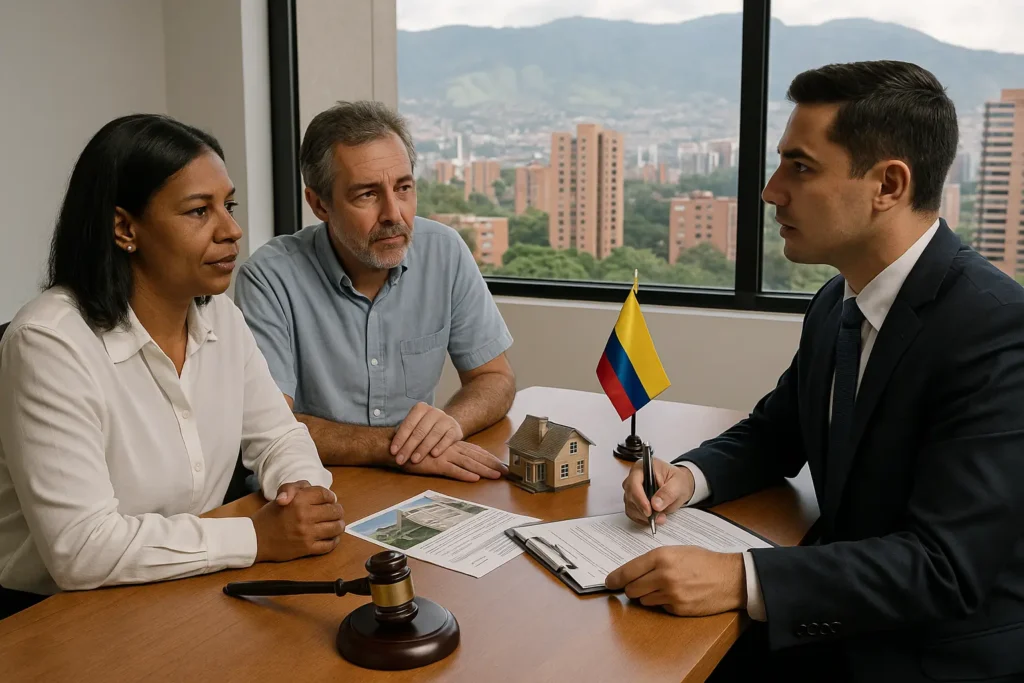If you are comparing brazil retirement visa vs colombia, the bottom line for most retirees is simple: Colombia is usually the better option—it tends to be more accessible, more affordable to maintain, and easier to plan around long-term. Brazil can still be a great lifestyle choice, but it commonly comes with a higher income bar and more day-to-day friction for foreigners.
In this guide, we compare brazil retirement visa vs colombia retirement visa across what matters most: minimum income, visa duration, typical costs, language and bureaucracy, and how each path supports long-term legal stability.
Brazil retirement visa vs Colombia: quick comparison table
| Category | Brazil retirement visa | Colombia retirement visa (M-11) |
|---|---|---|
| Minimum income | USD $2,000/month from retirement/pension income (baseline) | At least 3× the Colombian minimum monthly wage |
| Typical “ease” for most retirees | More documentation and Portuguese-language friction | Often simpler if your pension letter is clean and meets the threshold |
| Validity | Varies by case/registration and local rules | Commonly granted as a multi-year Migrant visa (renewable) |
| Path to longer-term status | Possible, but processes vary and can feel bureaucracy-heavy | More straightforward long-term planning for many retirees |
| Language | Portuguese is a real day-to-day factor | Spanish is a factor, but many retirees manage with basic Spanish + support |
What Is the Brazil Retirement Visa
Brazil offers a retirement-based residence option that generally requires proving stable retirement/pension income and completing consular and local registration steps. A widely cited baseline requirement is USD $2,000 per month in retirement/pension income documentation.
Where Brazil gets challenging in practice
Portuguese and process complexity can slow things down (especially document standardization and local follow-through). The income bar is higher for many retirees compared to Colombia.
Requirements and Application Process
To qualify for the Brazil Retirement Visa, applicants must meet the following core requirements:
- Be at least 60 years old.
- Provide proof of a minimum monthly income of $2,000 USD from a foreign pension source.
- Add an extra $1,000 USD per dependent (e.g., spouse).
- Show evidence of housing arrangements in Brazil (rental agreement, property deed).
- Submit a criminal background check from your home country.
- Hold valid health insurance accepted in Brazil.
Application Process
- Submit documentation to a Brazilian consulate in your home country.
- Attend a consular interview.
- Upon approval, receive a temporary residence permit, renewable as long as requirements continue to be met.
Benefits of Retiring in Brazil
- Long-term residency stability with periodic renewals.
- Access to Brazil’s public and private healthcare systems.
- Favorable tax incentives for many foreign-sourced pensions.
- Diverse options for lifestyle, from tranquil beach towns to urban centers.
- An international retirement community in cities like Fortaleza and Florianópolis.
Common Challenges with the Brazil Retirement Visa
- Language barrier: Portuguese proficiency is fundamental in most regions.
- Bureaucracy: Brazilian processes can be time-consuming and require persistence.
- Safety: Crime rates vary significantly by location; research is important.
- Higher income threshold than other South American countries.
Check M-11 eligibility
We confirm whether your pension letter meets the 3× minimum-wage test, and what wording Colombia expects—before you file.
What Is the Colombia Retirement Visa
Colombia’s retirement option is commonly known as the M-11 (retirement/pension) visa. For many retirees, it is the more flexible choice in the brazil retirement visa vs colombia retirement visa comparison because the income requirement is tied to 3× the Colombian minimum monthly wage (rather than a fixed USD $2,000 baseline).
If you want the exact filing strategy and document standard Colombia expects, use our official service page: Colombia Retirement Visa.
Requirements and Application Process
Applicants for the Colombian Retirement Visa must fulfill the following criteria:
- Receive a monthly pension of at least three times the Colombian minimum wage (approx. $750 USD in 2025).
- Provide an apostilled or consularized pension letter from their home country.
- Submit a clean criminal background check.
- Show proof of accommodation in Colombia.
- Hold health insurance valid in Colombia.
Application Process
- File all documentation with Migración Colombia or via Colombia’s Ministry of Foreign Affairs portal.
- Some cases may require an in-person interview.
- Once approved, the visa is typically valid for three years and is renewable.
Advantages of Retiring in Colombia
- Lower income requirement making it more accessible.
- Visa provides a pathway to permanent residency and Colombian citizenship.
- High-quality, affordable healthcare system with private and public options.
- Cost of living is among the lowest in Latin America.
- Warm, welcoming communities and an increasing number of English-speaking services in major cities.
If you’d like to explore more advantages of living in Colombia with a retirement visa, don’t miss our in-depth article: Top Benefits of Having a Retirement Visa in Colombia.
Challenges to Consider with the Colombian Retirement Visa
- Navigating document legalization (apostilles/consularization) may take time.
- Some bureaucratic complexity in the application process.
- While many regions are safe, some still require caution.
- Spanish is the main language while English is common in tourist areas, some knowledge of Spanish enhances the experience.
Avoid preventable delays
Apostilles, translations, and pension letters are where most M-11 cases slow down. We review your documents.
Brazil Retirement Visa vs Colombian: Which Is Better?
Understanding the Brazil Retirement Visa vs Colombia Retirement Visa comparison is essential for any retiree considering South America as their new home. Let’s break it down with some real-life scenarios:
1. Income Requirement Comparison
In the Brazil Retirement Visa vs Colombia Retirement Visa comparison, income eligibility remains a defining factor. While both countries require proof of stable monthly income, Colombia’s significantly lower threshold offers greater flexibility for retirees with more modest pensions. This difference can open the door for a wider range of applicants, especially those looking to maximize their retirement savings in a cost-effective destination.
2. Residency and Citizenship
Another key consideration in the Brazil Retirement Visa vs Colombia Retirement Visa analysis is how each visa fits into long-term residency planning. Colombia’s visa framework is especially attractive for those aiming to eventually obtain citizenship, thanks to its structured timeline and legal clarity. Retirees seeking permanence and legal integration may find Colombia’s approach more predictable and better suited to long-term goals.
3. Cost of Living
When it comes to daily expenses, housing, and general lifestyle affordability, Colombia continues to stand out in the Brazil Retirement Visa vs Colombia Retirement Visa debate. Even in major cities, expats report that their money goes further, from fresh produce at local markets to utilities and transportation. This economic advantage can make a meaningful difference in the overall quality of life, especially for retirees managing a fixed income.
Taxes and compliance for retirees
Even if you qualify easily, your retirement plan can still get complicated if you mix pension + investment withdrawals + foreign reporting obligations. If you are building a long stay in Colombia, this guide helps you avoid blind spots: Tax Guide for Expats and Pensioners
4. Healthcare Access
Finally, healthcare remains a crucial topic when evaluating the Brazil Retirement Visa vs Colombia Retirement Visa. While both systems offer access to quality services, Colombia’s healthcare is often praised for its efficiency, low wait times, and bilingual medical professionals in urban centers. These advantages can ease the transition for English-speaking retirees, offering peace of mind as part of their relocation experience.
Brazil Retirement Visa vs Colombian: Making the Right Choice
If you’re weighing the Brazil Retirement Visa vs Colombia Retirement Visa experience, the right choice depends on your personal goals.
- Choose Brazil if you strongly prefer Brazil’s culture/locations and your pension comfortably clears the higher baseline—and you are ready for Portuguese and heavier procedural follow-through.
- Choose Colombia if you want a retirement option that is typically more accessible, more budget-flexible, and easier to plan around long-term—especially if you want a cleaner compliance story from day one.
Both countries offer incredible opportunities for retirees, but choosing the right destination involves more than just sunshine and scenery. Legal processes, financial criteria, and long-term residency plans must all be carefully considered.
Ready to Take the Next Step in Your Retirement Journey?
If you’re comparing the Brazil Retirement Visa vs Colombia Retirement Visa and leaning toward Colombia’s accessible, affordable, and vibrant lifestyle, let Colombia Law Connection guide you through every step of the legal process. Our experienced team provides expert assistance to ensure your retirement visa application is smooth, compliant, and stress-free.









